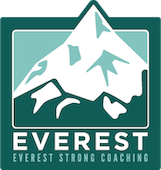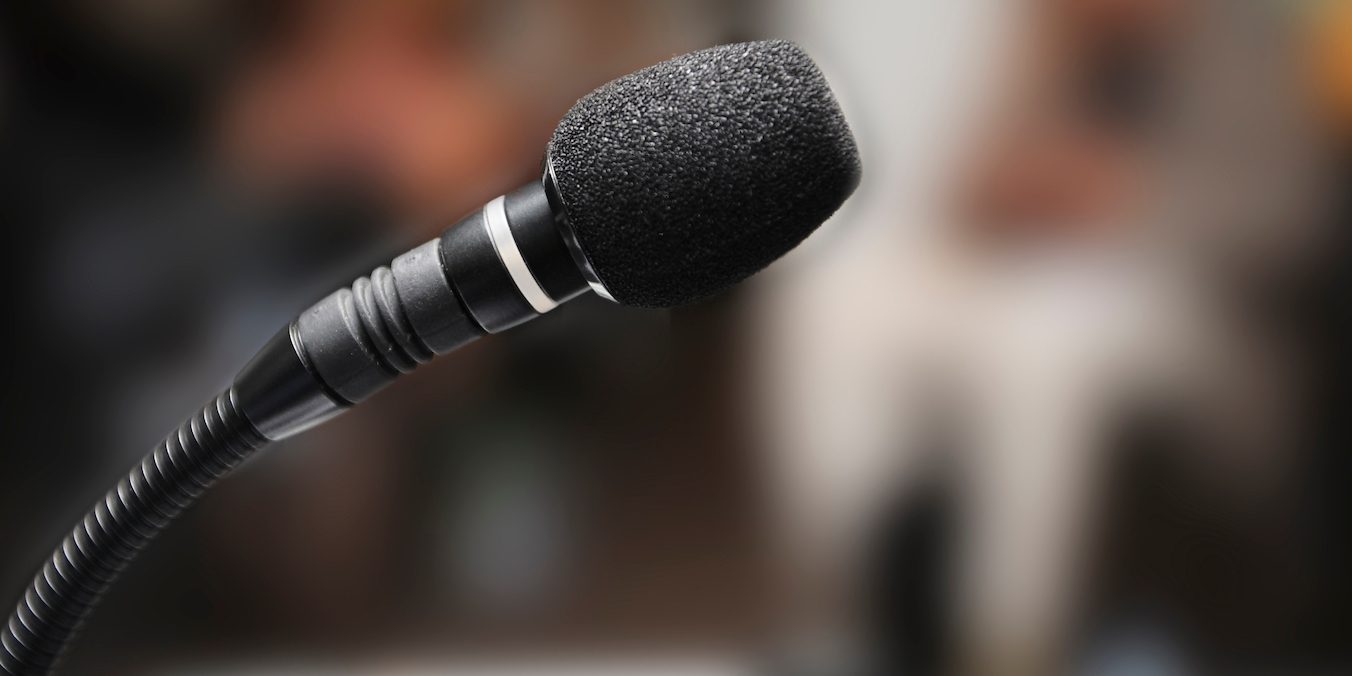The 11 Principles of Every Great Presentation
Do you seriously dislike giving presentations? Does standing in front of an audience cause you panic, feel nauseous and lightheaded? Do your knees shake and hands tremble? Well, you are not alone. A common phenomenon, it is estimated 75% of the population suffers from glossophobia, a fear of public speaking.
Glossophobia falls into the category of social phobias in the DSM (the official diagnostics book of the American Psychiatry Association) and has the potential to impact your professional relationships as much as your overall quality of life. Taking action to reduce your anxiety and improve your performance can make an important difference.
The following 11 tips and ideas are offered as a guide to walk you through the worst of your fear of public speaking.
Before the the Big Day:
-
Know your material
This cannot be stressed enough. If you struggle with imposter syndrome, a sense that you’re a fraud and you’re going to be exposed as such, the first thing to do is make sure you in fact have knowledge about your subject matter. The better you know your material the easier it will be to talk to anyone about it and with the authority and confidence to be convincing of your expertise. Imagine you were asked to tell a group of visitors from another country about your particular morning routine. Most likely this would be an easy subject matter, as you do it every day and you know it inside and out. You could walk through it with your eyes closed.
-
Practice Makes Perfect
Knowing your material is half the battle. Rehearsing it is the other half. Doing so with distractions, such as people talking in the background, the tv on, dogs barking, etc. can significantly improve your ability to power through when some people in your audience are not as polite as you would like and chatting audibly. Sometimes recording yourself or watching yourself in a mirror to get a better sense of your body language can be useful. If your presentation is on a schedule, time yourself and figure out your best pace. You are better off speaking more slowly, leaving room for pauses for laughter or fielding questions, than racing through.
-
Know Your Audience
Toastmasters suggests tailoring your presentation to your audience. Will you be speaking to teenagers, parents, medical professionals, scientists or a mixed group of company employees? Using language that is clear and understandable to your audience is key. Teenagers tend to respond best to activity based presentations, with lots of interaction and the information being all about them. Medical professionals and scientists love numbers. Knowing your audience and tailoring your presentation to their listening helps catch their attention.
-
Be Prepared
Visual aids like a Powerpoint are great tools, but they should be kept simple. Short phrases and bullets and plenty of pictures allow you to stay oriented within your presentation and your audience to stay focused on you. You don’t want them getting lost in lengthy sentences and verbose information on your slides.
Also, eliminate another barrier to a great performance by having all you need ready to go ahead of time. Have your personal notes in easy to read and understandable bullets points. Know the pronunciations of challenging terms. Have your handouts ready and packed at least the night before. And arrive early to your presentation, giving yourself enough time to test out the IT equipment, as Power Points and laptops have a funny tendency of taking longer to set up than their creators would want us to believe.
On the Big Day:
-
Presentation Diet
If you are prone to nervousness when presenting, avoid caffeine beforehand. Rely on a cold shower to wake, naturally energize and calm you. Drink only water and consume a healthy meal so as to avoid jitteriness and low blood sugar levels.
-
Settle In
Arrive early and settle into the space. Have enough time to go over your notes and get the tech working.
-
“Exercise”
If you are feeling particularly anxious before your performance, conquer that fear by being well versed in meditation, relaxation, breathing and visualization exercises. A study looking at brain patterns in weightlifters found visualizing lifting very heavy weights was almost as effective at creating muscle growth as actually doing it. Mental rehearsal of a successful game/presentation/performance using highly detailed internal images and engaging all 5 senses has been shown to have remarkable results.
Being an expert at what works for you can be a game-changer. Shortly before going on stage, think of something funny and practice laughing and smiling. Laughing and smiling are great ways to relax and reduce pain and anxiety. Professional athletes use this technique too, particularly during the most challenging stretches of their race/match/contest with noticeable results.
-
Remember! Being Nervous is Normal
Nerves are normal. No one expects perfection. In fact, your audience is not there to judge you. It actually wants you to succeed and do well. The audience is on your side and most interested in your subject matter and the service you are providing.
Lights, Camera, Action…You’re On!
-
Own Your Vulnerability: Be a Rockstar
“I don’t know.” This is a powerful phrase. Feel good about using it. It lets people know you are confident enough to admit an imperfection. When it’s followed by “Let me get back to you on that,” then you are a rockstar. Also, command the space by facing your audience, making some eye contact, moving around a bit, but not pacing or fiddling, keeps your audience interested. Make sure your voice has inflection, pausing to allow your audience to absorb the important things you have to say. This also allows you to collect your thoughts and keep pace. Talk to your audience. Don’t hide behind your notes. Keep them to the side for occasional reference only.
-
Introduction or Epilogue
Many of us have learned to introduce ourselves at the beginning of a presentation. And yet most forget our names a couple of seconds into meeting us. Time to test out a new formula and draw your audience in to you and your subject matter immediately. Forget introductions until the end. For increased impact try one of the following presentation starters recommended by YPO, a global leadership organization for chief executives in over 130 countries:
- Open with a quote: Opening with a relevant quote can help set the tone for the rest of your speech. For example:
-
- “Get your facts first, then you can distort them as you please.” — Mark Twain
-
- Alternatively, start with a “what if” scenario. This is an invitation to your audience to follow your thought process. It would look something like this:
-
- “What if we were all completely honest with one another? How would things be different if there were no ‘little white lies’? What would happen if we said exactly what was on our minds, all day every day?”
-
- Create an “Imagine” Scenario
More useful for sensational examples, it puts your audience members directly into the presentation via visualization.-
- “Imagine skiing down a great slope and an avalanche starts right above you. What memories would flash before you? Now imagine the avalanche passes right by you. How differently would you act when you arrived at the bottom of the slope that day?”
-
- Ask Questions
Ask a rhetorical or literal question. A question unconsciously demands and begets an answer.-
- “Who wouldn’t want to win the lottery?”
-
- Start with Silence
A pause, just a few seconds or perhaps a bit longer creates a space for your audience to sit and quiet down. The expectation is that you will start right away, but t taking your time with an extra pause, not only brings all the attention right where you want it – on you — but it also puts you in command of the presentation and pace. - Flash Some Numbers
People love soundbites. They revel in fun facts and quick information. The use of a surprising and therefore powerful statistic relevant to your subject matter will inevitably have emotional appeal.-
- “Look to your left. Now look to your right. One of your seat-mates will _______.”
- “In this room, over 90 percent of us are going to _________.”
-
- Lead with a Left Turn
A powerful statement or phrase can catch the audience’s attention by keeping them guessing as to what you’re about to say next. Using the silence technique after can also adds to the effect.-
- “We can not win. We can’t win…” (Pause)
- “… That’s what every newspaper in the country is saying.”
-
After:
- Last but not least…Congratulate yourself!
When it’s all done, first give yourself a big pat on the back for a job well done. You survived and nobody died! Now it’s time to review, learn from your mistakes and successes. If you have audio or video recorded yourself you have something concrete to review. Next, embrace the challenge again soon. The best way to improve is to do it again often until the process essentially becomes so normal that you’re basically on autopilot. Presto, no anxiety left!
Still feel nervous? Give us a shout. Mental Game Coaching may be just the ticket to turn you into a public speaking superstar.





